 For many years I have noticed a serious problem in estimating the value of electronic security systems for large projects. Here are some aspects to take into account when estimating these values.
For many years I have noticed a serious problem in estimating the value of electronic security systems for large projects. Here are some aspects to take into account when estimating these values.
by Germán Alexis Cortés H. *
We all know that a professional design is required that tells us the specifications of the elements and the detailed amounts of equipment and infrastructure. However, on many occasions the end user is unaware of this stage and considers that it is the integrating companies who "magically" must know what equipment they need, to meet the security requirements.
In reality, the problem originates in the lack of vision and knowledge of the end user, about the imperative and almost obligatory need to be advised by experts, to make a design, plan the project and discuss many of the options that are available in the market, before requesting quotes.
Current situation
Companies integrating electronic security in their daily routine face difficult situations because they must generate an economic offer of a security system, but they do not know exactly what they must quote. And it is understood that doing the design work, without knowing the intentions of the end user is a risk that costs a lot of money to assume.
The obvious solution (it is what most do, currently), is to enter that stage of free design and "reluctantly", follow these steps: a) request architectural plans, b) in a general and careless way make a tour of the site, c) make a conceptual and basic design for free of the system to be installed and d) very quickly generate only approximate amounts of equipment because to detail the infrastructure More time would be needed.
This phase must be very fast, so that the end user feels that his economic proposal is made immediately, sees that the integrator is efficient and is not discouraged in the purchase of electronic systems.
Inefficiency and innocence
But all this is a big mistake, at least in medium or large electronic security systems. Because many times an effort is made to make that incipient, free and ultra-fast "design", which generates inaccurate amounts and therefore costs, which in the vast majority of cases are affected by adverse situations and surprises at the time of installation, increasing the final value a very large percentage. Contrary to what many believe, this only demonstrates the lack of experience of the integrator and the unprofessionalism with which the initial estimate was made.
At other times the budgets seem excessive to the buyer and simply discourage him to buy, then losing the effort of the integrating company and badly spending the time of both companies.
That's where I've found that the percentage of effectiveness of many integrating companies is very low. That is, they become "factories of proposals and quotations"... but they sell very little. I have dozens of friends, who live with the innocent illusion of great profits, because they have quoted a lot and in the end ... actual sales results are disappointing; affecting the morale of the entire technical and commercial group.
What to do then?
The first thing will be to qualify our client. It is very important to know the type of knowledge of the subject of electronic security that our interlocutor has and the true intention he has when requesting an economic proposal.
That is, if it is the first time that the end user is interested in the field of electronic security, it is very likely that all you want to know is a general estimate of how much it costs to have a system within your general project.
But if you are a user who already knows the subject, its estimated cost, processes and realities, then what you want is to have a formal and detailed proposal of the system, in that case you will surely have a specifications and preliminary quantities fruit of a design or if you do not have them, you will understand that this is the next step, before a detailed offer.
Recommended strategy
Let's start by recognizing that it will always be better, explaining to the end user that a professional design stage is needed before you can quote anything. It should be clarified and made aware that this professional design requires a specialized human effort, that it takes a reasonable time and that it generates professional documents such as risk studies, exact plans, diagrams, engineering calculations, detailed tables and specifications.
Therefore all this has a cost that is impossible to give away. Only then will you be able to know conscientiously, how much your security system is worth and if the budget is not enough, to be able to divide it into phases programmed and oriented by the designer.
However, not all end users are willing to pay for a design, let alone wait for the professional design to be realized. Sometimes, all the end user wants is to know roughly how much a system that meets their needs would cost them, but without committing to buy it or invest in the studies and design for it.
There is an easy way to solve this situation that allows us to give an approximate value of the system, without the need to make exhausting and incipient designs, or spend human resources unsuccessfully. I mean that we must discover and calculate some indices and multiplier factors, based on data that the same end user gives us, to quickly estimate the value of our products and services.
Demonstrate professionalism
Some end users have acknowledged that they lost confidence in many integrators, when asked about an estimated budget and the representative evaded the answer on several occasions and in the end left without committing to a rough figure.
Think about it. It is as if you were going to buy a car, you explain to the car seller that you require a camper to go to your farm, you ask the seller how much it is worth approximately, but in exchange for hearing a figure, or at least a probable range; the seller gives him many explanations, fills him with simple apologies and tells him that he must visit his house, his farm, meet his family and in a week he sends him the quote of the campero. Would you like to? Would you feel comfortable allowing the seller to make all those visits? And then because in electronic security we can not give an approximate price? Could it be that we have no experience? Could it be that we don't know our work? So what happens?
Many people in the guild tell me that they cannot commit to a figure, because it depends on many factors that cannot be generalized and that therefore a stage of study becomes indispensable. I totally agree with that. But do you really believe that in three days you will do the detailed and professional study of the entire system and generate a figure that comes close to the final cost?
Remember that we start from a reality and that is that most security systems are sold in one figure and end up being made in a very different one. Do you think that's professional? Do you think that helps build trust in our guild?
That is why many end users are wary when the supposed "expert" does not know how to charge and does not even give approximate figures immediately.
The solution is still the indices that we must discover, calculate and learn to use with agility.
Discovering indices
An index according to the Royal Academy of the Spanish Language, is a numerical expression or Cipher that expresses the relationship between a series of data and allows conclusions to be drawn.
Therefore for electronic security we must look for the Indices that help us express approximate costs based on a series of data that our client already possesses. Doing the hard, something simple and simple, is worth gold. In this regard I offer you (for free), two methods that I have developed in a very simple way and that have helped me to avoid becoming an inefficient "quote factory".
I clarify that there may be many similar methods and indexes, which I hope you discover, calculate and can share with me to disseminate it among all.
a) Price per square meter.
It is the most recognized and widely used method in the construction guild. It consists of finding a cost per square meter of an electronic security subsystem. Therefore we should discover and calculate an index for a CCTV system, for an alarm system for intrusion or fire detection and finally one for an access control system.
In this way it would be very easy to ask our client, the total area of the project, multiply it by the price per square meter and in 20 seconds (using a manual calculator) or less time (using his mental agility), it would have an approximate value of the cost of the electronic security system for that project.
b) Percentage of the project.
The second method, equally known and used in other areas and professions for construction, is to discover and calculate a percentage that represents each subsystem within the total cost of the project. In this way it is very easy to give an approximate value of the electronic security systems, knowing the total value of the project (your client surely knows it) and taking out the estimated percentage. Again in less than 20 seconds I would have an approximate figure.
Both methods can give us an estimate or at least a range of values. Ideally, the methods used should yield figures that should be similar and therein lies the effectiveness and certainty of the indices.
Satisfied customer
I guarantee that your client will be satisfied with the answer and will understand that it is an approximate figure, which in no way commits you or your company, because it is understood that no one in 20 seconds manages to know the exact price of a project with so many variables. However, you are showing your client knowledge of the subject and experience.
In many cases that value is enough to go ahead and justify the stage of studies and professional design necessary or, simply stop the activities in a project where the cost was not foreseen and therefore it is unnecessary to continue.
I will give you another golden tip: the moment you pronounce the approximate value you achieved with the previous calculation of 20 seconds, please look at your client and observe in detail the reaction to the pronounced figure... on many occasions even if your client's words say something, their body language (55% of human communication) can say something else. If you are a professional in sales you will have knowledge of neuro-linguistic programming and you will surely understand that we must know how to read our client's messages.
It is there that we become expert advisors and can make immediate decisions. You will also understand that none of this can be done by phone, let alone by email. But that is another issue, to which we will devote space and time on another occasion.
How to calculate indices?
In many cases these indices can be similar. However, it depends on each nation, the customs and way of working of the constructive area. Therefore it is best to have many quotes, many statistics and analyze the behavior of the guild on each site.
I anticipate telling you that the process to identify and calculate the indices is tedious, repetitive and very wasteful; but it must be done to ensure successful results. (It is recommended to update the indices, at least every year.)
1. Start with the electronic security quotes your company has made in the last three (3) years. Classify them into three groups. Large, medium and small projects. Discard small projects. At the end of this article, I talk a little bit about them. Work with medium and large ones.
2. Also classify in project complexity, High, Medium and Low Complexity. For example, low complexity is an office building, where you know at what times people enter and leave, where they should enter and leave and what routine activities they have. While a highly complex project can be a hospital or an airport. A Mall can be of medium complexity.
3. From each quote extract the subtotals of each subsystem, including the infrastructure issue (ductwork, wiring, spaces).
4. Now tabule in a spreadsheet like Excel, the extracted results. Name three (3) columns according to the size of the project and for each of them, name it in another three (3) columns by complexity (in total you will have: nine (9) columns). Now define five (5) or more rows, one for each subsystem. It now has a 45-cell array.
5. In each cell take out the arithmetic average (add the figures and divide by the number of figures added) of all the subtotals that classify in that cell, according to their own quotes.
6. Finally you will have to do an investigation with your clients, where you will have to ask them two data: the area in m2 of the project and the final cost of the project, where you quoted electronic security equipment. This is the most delayed stage, because not all data is easy to achieve.
7. Note that it is statistically based on all quotes, from large or medium systems. Not only in the real clients with whom you have contracted. Therefore I am sure that its statistical base is large and sufficient.
8. Include the investigated data as rows at the bottom of the table, classifying the project as agreed. In these cells you can also include the arithmetic mean of the values of each project.
9. Finally evaluate and analyze the figures: You will be able to generalize and find an average value of each subsystem per square meter (depending on the complexity and size of the project).
10. You will also be able to generalize and find an average value of the cost that each subsystem represents with respect to the total project.
I insist that this data can be difficult and tedious to investigate but it is your duty to do so, with the aim of having a great and agile tool, which will allow you to be more efficient and always be one step ahead of your competition.
In some companies this work is done automatically and routinely, based on a commercial management software, CRM type or similar, in such a way that the indices are continuously updated and the statistical trends of the indices are kept in each season of the year. Excellent tool to take safer steps and minimize the inherent risk of the figure.
Example of indexes
I imagine you are a little confused (I suggest that when you finish reading the whole article, read again the way to find the indexes for yourself). Just as an example, I give you three (3) data, which have been verified by some companies, in several Latin American countries:
*The average value of all electronic security systems (including the design stage, supervision, infrastructure and equipment for CCTV, alarms and access control), is approximately 3.5% of the total value of a complete project at the architectural and other engineering level.
*The value per square meter of all electronic security systems can vary between US$30 and US$80, depending on the complexity of the project.
*The weight of the cost of each subsystem within the totality of an electronic security system, depends on each need, but generalizing and averaging according to 2012 statistics, we can divide it as follows: CCTV 29%, Access 26%, Fire 18%, Infrastructure 14%, Intrusion 8% (without perimeter), Integration 5%.
I remind you that the costs and values expressed as indices and fees, are only a reference as an example. It is essential that you perform the analyses based on your own statistics to achieve accurate indices in your city and under its rules.
Real practical examples
Let's see how to apply these indices, with two real examples:
1. You meet a customer who tells you that you are going to build a shopping mall. The mall will have 15,000 square meters. He wants you to quote the Fire Detection system and asks you how much that is worth.
Then you can do the following process:
a) Classifies the mall as a project of medium low complexity. Based on index II, he sees the center point between $30 and $90 being $60. Then you decide you're going to use an index of $45 per square meter.
b) According to index III, you know that approximately the fire system weighs 18% of all electronic security systems.
c) Does the following mathematical operation: 15,000 m2 x US$45 x 0.18 = US$121,500
He tells his client that the system can cost about $120,000, but that to have an accurate and detailed value, he must do a professional study and design, before formally quoting. Do you understand the huge difference, in your response, in having adequate indices?
2. You go to visit a construction company and they inform you that they want to build a 5 star hotel in the bay. They do not yet have definitive architectural plans. They want you to have all the security systems. How much can they cost?
a) Not having an exact value of the area, you ask how much is the total budget for the project. He is informed that a $30 million project has been considered so far.
b) You know that the weight of all security systems is approximately 3.5% of the total project.
c) Does the mathematical operation: US$30M x 0.035 = US$1.050 million. He tells the manager that security systems, including equipment and ductwork and all associated expenses, can cost a little more than a million dollars, but that to have an accurate and detailed value, he must do a professional study and design, before formally quoting.
By saying the figure, you look at and analyze your client and only then will you know, correctly interpreting the reaction, if you can move forward with the project or if you change the strategy. And all this in less than 20 seconds... Demonstrating professionalism, seriousness and experience; but above all without investing engineering resources, in fast, unsuccessful and unprofessional designs.
Next stage
Once your client knows the approximate (estimated) cost of the system and wants to move forward, then the next stage is to perform the studies and professional design of the security system. Obviously this stage will have a cost and therefore the next quote should not be for the supply of equipment and labor; but specialized consulting tasks that in a VERY professional and detailed way, will indicate the specifications and real costs of a system that meets the needs of our client.
This stage can be performed by yourself as an electronic security integrator; only if you have the experience and the trained professional. You can also outsource it externally to a consulting firm or you can recommend your client with whom to contract this phase.
I assure you that in any case, your client will realize your professionalism, increase confidence in your company and demonstrate extensive experience in the guild, for the benefit of all.
Conclusions
We must avoid making quotes based on incipient designs, too general and unprofessional, because we are deceiving the end user and losing credibility. We must know the true intentions of our buyer. We must charge for professional Studies and Designs.
We must strive to calculate indices (based on our own statistics) that help us to give an immediate and approximate response to the estimated value of the different electronic security systems.
For small projects, apply the method, but as the detailed design is much faster and simpler, then there is less risk when making the proposal based on actual visits and studies. So for very small projects, you can keep "giving away" the basic design.
The method applies to the rest of electronic networks for communications, automation, audio, video, control and other electronic elements in a modern building. If you want more information do not hesitate to communicate your concerns and I will gladly help you. We must increase the effectiveness of our economic offers, avoiding being "quote factories".
* Germán Alexis Cortés H. is a Colombian Electronic Engineer, with a postgraduate degree in Engineering Management Systems. Consultant of the National Institute of Standards and Technology – NIST, in Electronic Security and Building Automation. CCP of ASIS, and CISSP of ISC2. He has over 20 years of experience in the electronic security industry. Renowned lecturer and university professor on high-tech issues at the Latino level. He has been a director of several companies in the sector and is currently a partner and directs Insetrón Ltda, an engineering and technical consulting company in electronic network projects for security, communications and automation. He has successfully participated in more than 150 projects at the Latino level.





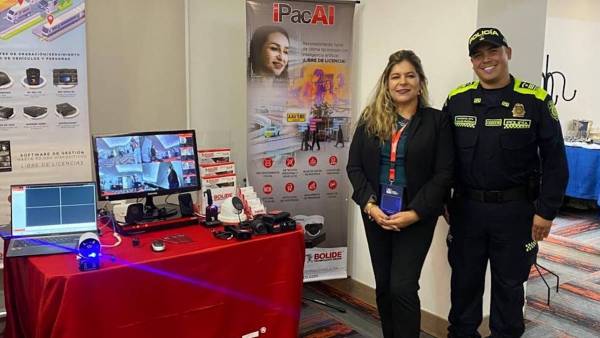
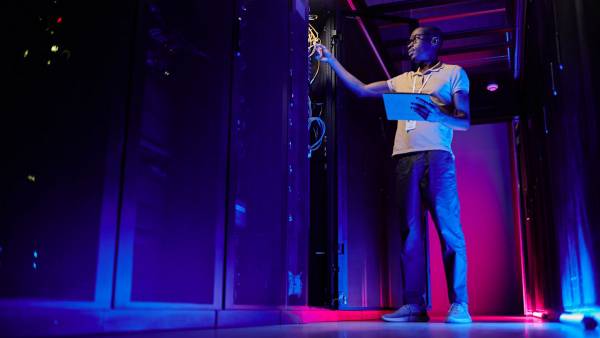


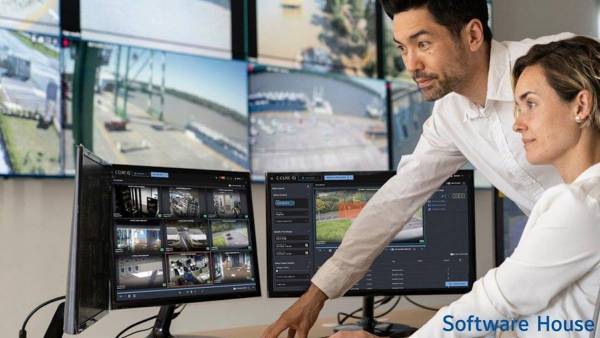
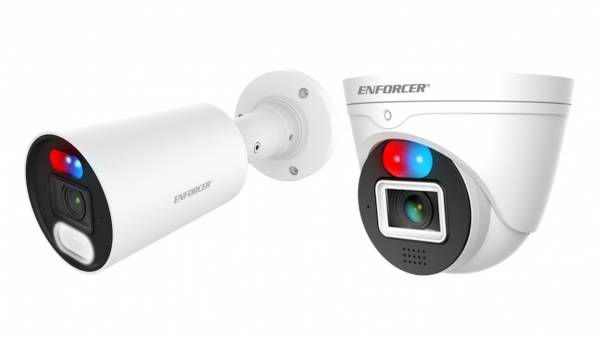

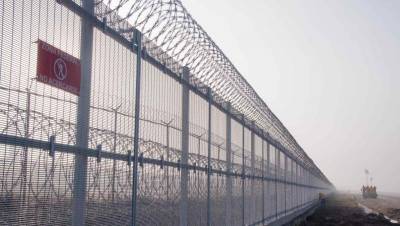












Leave your comment